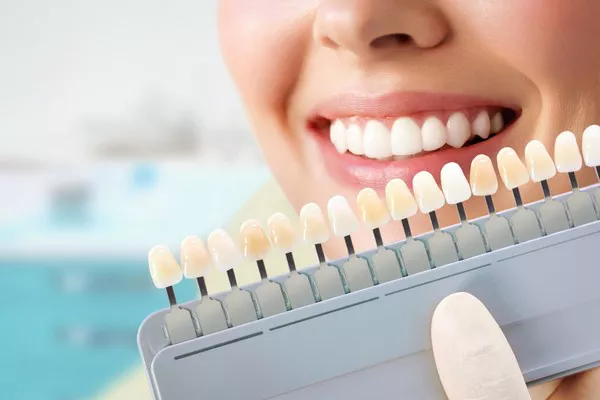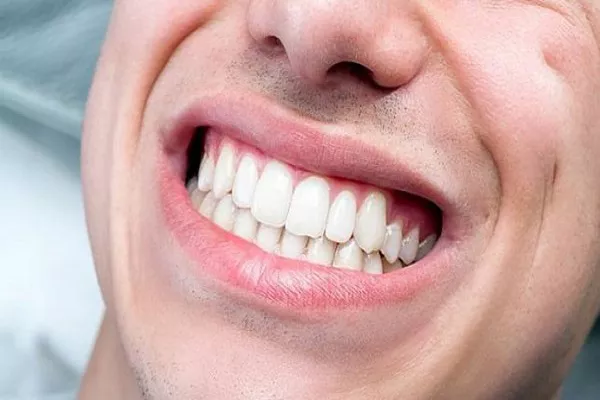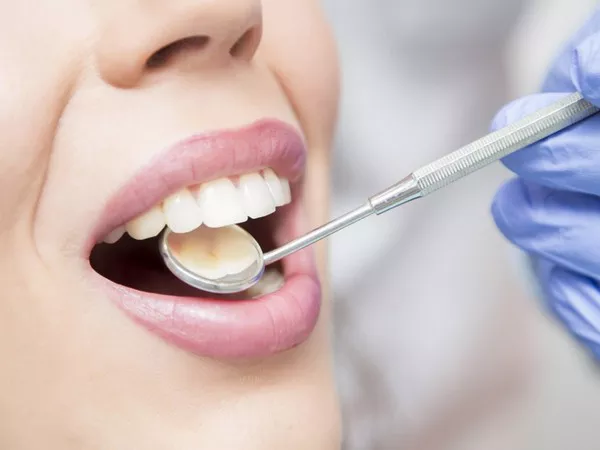Maintaining good oral hygiene is essential for a healthy mouth and a confident smile. However, despite our best efforts, many of us may still struggle with yellow plaque buildup behind our teeth. In this comprehensive guide, we will explore the causes of yellow plaque, effective prevention techniques, proper brushing and flossing methods, home remedies, the importance of professional dental cleanings, risks of untreated plaque, when to seek dental assistance, and dietary recommendations for optimal oral health.
Explanation of Plaque and Tartar
Plaque and tartar are common dental terms often used interchangeably, but they refer to different things. Plaque is a soft, sticky film that develops on teeth when bacteria mix with food particles and saliva. If not removed through proper oral hygiene practices such as brushing and flossing, plaque can harden into tartar, also known as dental calculus. Tartar is a hard, yellowish deposit that forms on teeth and can only be removed by a dental professional.
Causes of Yellow Plaque
Yellow plaque can develop due to various factors, including poor oral hygiene habits, smoking, and consumption of certain foods and drinks. When plaque is not effectively removed through regular brushing and flossing, it can accumulate and harden into tartar, leading to visible yellow or brownish stains on teeth. Smoking not only stains teeth but also reduces saliva production, making it easier for plaque to adhere to tooth surfaces. Additionally, foods and beverages high in sugar and carbohydrates provide an ideal environment for bacteria to thrive and produce plaque.
Prevention Tips
Preventing yellow plaque buildup begins with establishing a consistent oral hygiene routine. Here are some tips to help prevent plaque formation:
- Regular Brushing: Brush your teeth at least twice a day using fluoride toothpaste and a soft-bristled toothbrush. Ensure that you brush all tooth surfaces, including the front, back, and chewing surfaces, using gentle circular motions.
- Flossing: Floss daily to remove plaque and food debris from between teeth and along the gumline where your toothbrush cannot reach.
- Mouthwash: Rinse with an antimicrobial mouthwash after brushing and flossing to help kill bacteria and freshen breath.
- Limit Sugary and Acidic Foods: Reduce your intake of sugary and acidic foods and drinks, as they can contribute to plaque formation and tooth decay.
- Drink Water: Drink plenty of water throughout the day to help wash away food particles and bacteria from your mouth.
- Regular Dental Check-ups: Schedule routine dental check-ups and professional cleanings every six months to remove any plaque and tartar buildup and address any oral health concerns.
Proper Brushing Techniques
Brushing your teeth correctly is crucial for removing plaque and preventing its buildup. Follow these steps for proper brushing:
- Choose the Right Toothbrush: Select a soft-bristled toothbrush that fits comfortably in your mouth and allows you to reach all tooth surfaces easily.
- Use the Right Amount of Toothpaste: Apply a pea-sized amount of fluoride toothpaste to your toothbrush.
- Brushing Technique: Hold your toothbrush at a 45-degree angle to the gums and brush in gentle circular motions. Pay close attention to each tooth surface, including the front, back, and chewing surfaces. Brush for at least two minutes each time.
- Don’t Forget the Tongue: Brush your tongue gently to remove bacteria and freshen breath.
- Replace Your Toothbrush: Replace your toothbrush or toothbrush head every three to four months or sooner if the bristles become frayed.
Flossing and Cleaning Tools
In addition to brushing, flossing is essential for removing plaque and food particles from between teeth and along the gumline. Here’s how to floss effectively:
- Choose the Right Floss: Use dental floss or interdental cleaners that are comfortable and easy to use.
- Flossing Technique: Gently guide the floss between your teeth using a back-and-forth motion. Curve the floss around each tooth in a C shape and slide it up and down to remove plaque and debris.
- Additional Cleaning Tools: Consider using dental picks, water flossers, or interdental brushes to clean hard-to-reach areas between teeth.
Home Remedies
While proper oral hygiene practices are the best way to prevent yellow plaque buildup, some home remedies may help remove surface stains and maintain oral health:
- Baking Soda and Hydrogen Peroxide Paste: Mix baking soda with hydrogen peroxide to form a paste. Use this paste to brush your teeth gently for a few minutes before rinsing thoroughly.
- Oil Pulling: Swish a tablespoon of coconut oil or sesame oil in your mouth for 10-15 minutes, then spit it out. Oil pulling may help reduce bacteria and plaque in the mouth.
- Whitening Toothpaste: Use whitening toothpaste containing abrasive particles or chemicals that help remove surface stains. However, use these toothpaste products with caution to avoid enamel damage.
It’s important to note that while home remedies may help remove surface stains, they are not a substitute for professional dental care.
Professional Dental Cleaning
Regular dental check-ups and professional cleanings are crucial for maintaining good oral health and preventing plaque buildup. During a dental cleaning, a dental hygienist will use special tools to remove plaque and tartar from your teeth, especially in areas that are difficult to reach with regular brushing and flossing. Professional cleanings also allow your dentist to identify any early signs of dental problems and provide appropriate treatment.
Risks of Untreated Plaque
Failure to remove plaque can lead to various dental problems and complications, including:
- Gum Disease: Plaque buildup can irritate the gums and lead to gingivitis, an early stage of gum disease characterized by red, swollen, and bleeding gums.
- Tooth Decay: Plaque acids can erode tooth enamel, leading to cavities and tooth decay.
- Bad Breath: Bacteria in plaque can produce foul-smelling gases that cause bad breath.
- Tartar Formation: If plaque is not removed, it can harden into tartar, which can only be removed by a dental professional.
When to See a Dentist
If you notice yellow plaque buildup on your teeth or experience any signs of gum disease or tooth decay, it’s essential to consult a dentist promptly. Additionally, if plaque has hardened into tartar, professional intervention is necessary to remove it safely and effectively. Other signs that indicate the need for dental care include persistent bad breath, swollen or bleeding gums, tooth sensitivity, or changes in the appearance of your teeth or gums.
Dietary Recommendations
In addition to practicing good oral hygiene habits, making dietary changes can help prevent plaque buildup and maintain oral health. Consider the following dietary recommendations:
- Limit Sugary Foods and Beverages: Reduce your consumption of sugary snacks, sodas, and candies, as they can promote plaque formation and tooth decay.
- Eat Teeth-Friendly Foods: Choose foods rich in calcium, such as dairy products, leafy greens, and almonds, to promote strong teeth and enamel.
- Crunchy Fruits and Vegetables: Snack on crunchy fruits and vegetables like apples, carrots, and celery, which can help clean teeth and stimulate saliva production.
By incorporating these dietary recommendations into your daily routine and maintaining a consistent oral hygiene regimen, you can effectively prevent yellow plaque buildup and promote optimal oral health.
Conclusion
yellow plaque behind teeth can be unsightly and detrimental to oral health if left untreated. By understanding the causes of plaque formation, implementing proper oral hygiene practices, seeking professional dental care as needed, and making dietary modifications, you can effectively remove yellow plaque and maintain a healthy smile for years to come. Remember, a healthy mouth is a key component of overall well-being, so prioritize your oral health today for a brighter tomorrow.
FAQs About Yellow Plaque Behind Teeth
1. How do you get rid of yellow plaque on the back of your teeth?
To effectively remove yellow plaque on the back of your teeth, it’s essential to practice good oral hygiene habits. Start by brushing your teeth at least twice a day using fluoride toothpaste and a soft-bristled toothbrush. Be sure to brush all tooth surfaces, including the front, back, and chewing surfaces, using gentle circular motions. Additionally, floss daily to remove plaque and food debris from between teeth and along the gumline where your toothbrush cannot reach. Using an antimicrobial mouthwash after brushing and flossing can also help kill bacteria and freshen breath. If the plaque has hardened into tartar, you may need to visit a dentist for professional cleaning.
2. What is the yellow gunk behind my teeth?
The yellow gunk behind your teeth is likely plaque, a soft, sticky film that forms on teeth when bacteria mix with food particles and saliva. Plaque can accumulate on tooth surfaces, along the gumline, and in hard-to-reach areas, leading to yellow or brownish stains. If not removed through proper oral hygiene practices, plaque can harden into tartar, also known as dental calculus, which appears as a yellowish deposit on teeth.
3. How do you get rid of tartar on the back of your teeth at home?
While proper oral hygiene practices can help prevent tartar buildup, removing tartar at home is challenging once it has hardened onto teeth. Tartar can only be effectively removed by a dental professional during a professional cleaning. However, you can minimize tartar formation by brushing and flossing regularly, using an antimicrobial mouthwash, and avoiding sugary and acidic foods and beverages that promote plaque formation.
4. Can I remove hardened plaque myself?
It is not advisable to attempt to remove hardened plaque, also known as tartar, yourself. Tartar removal requires special tools and techniques that are best performed by a dental professional during a professional cleaning. Trying to remove tartar at home using sharp objects or abrasive substances can damage tooth enamel and gums, leading to further oral health problems. If you notice hardened plaque on your teeth, schedule an appointment with your dentist for a thorough cleaning and oral examination.
































